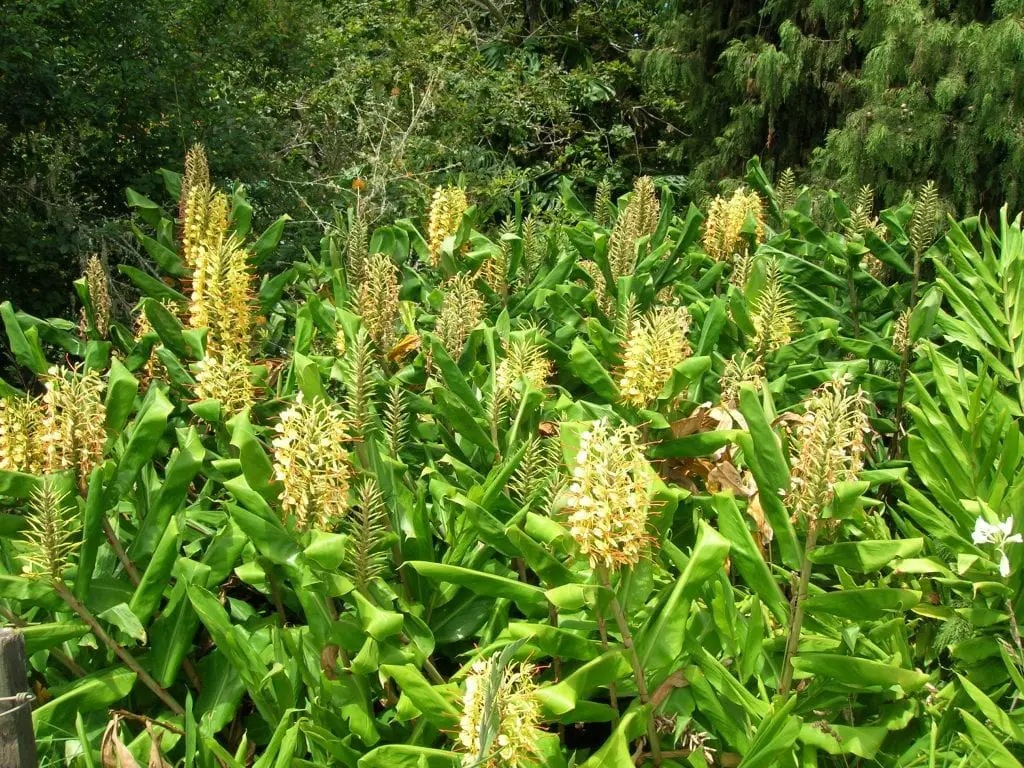
Image – Wikimedia Commons / Forest & Kim Starr
There are rhizomatous plants that are very pretty, but also invasive. One of them is the Hedychium gardnerianumwhich is native to the Himalayas. With a height of up to two meters, it produces very pretty yellow inflorescences.
Being included in the Invasive Species Catalog, It is important that you know what its characteristics are to avoid problems.
What are their characteristics?
Our protagonist is a rhizomatous herbaceous plant whose scientific name is Hedychium gardnerianum. It is popularly known as white ginger or edichio, it is, as we said, native to the Himalayas. It reaches a height of between 1 and 2 meters, with alternating, lanceolate and acute leaves. The flowers, which sprout in summer, meet in terminal spikeswhich are formed by a yellow corolla.
Its growth rate is very fast, which, added to the fact that it has a great tendency to take root sprouts, makes is considered an invasive plant since August 2, 2013 in Spainas well as in New Zealand and Hawaii.
Can it be cultivated?

Image – Wikimedia Commons / Wikimedia Commons
No. He Hedychium gardnerianum It is a plant that once it adapts – something that does not take long – does not allow the native flora – that is, the one that has grown in that place for centuries and perhaps millennia – to recover. So it is not a good idea to have it; Moreover, if it is seen in nature, what is advisable to do is to pluck it up with a hoe, trying not to leave roots. And still, unfortunately, it is very difficult to remove it completely. In this sense, it is like the Oxalis (clover) herb, which sprouts almost from nowhere.
So, we hope that this article has helped you to meet one -more- invasive plant, and so that you can see that no matter how decorative it is, it should not be in any garden.

